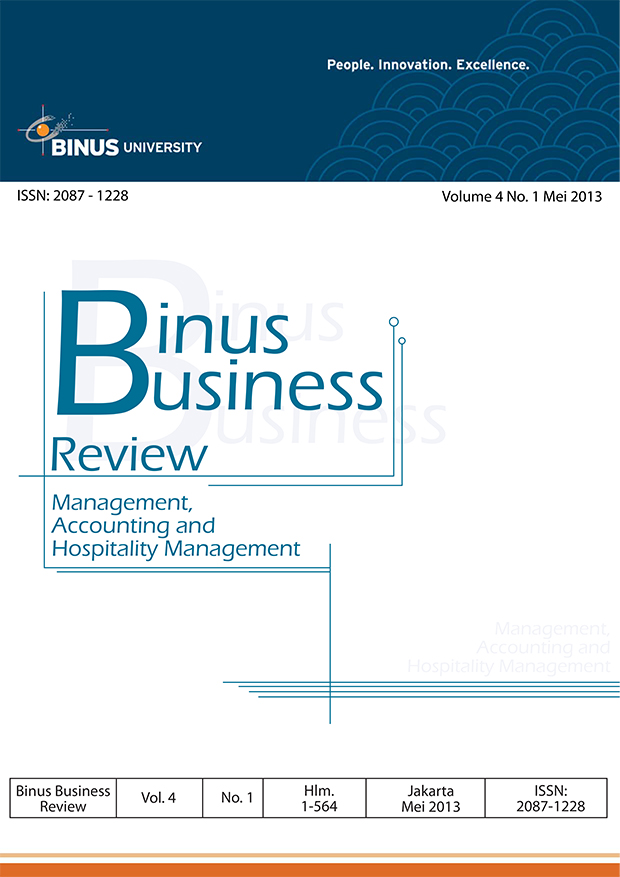Evaluasi Pelaporan Tanggung Jawab Sosial pada PT Bukit Asam (Persero) Tbk
DOI:
https://doi.org/10.21512/bbr.v4i1.1031Keywords:
Social accounting, CSR, environmental accounting, PT Bukit Asam (Persero) TbkAbstract
This study uses a content analysis framework that provides information on the comprehensiveness of corporate social responsibility (CSR) reporting, an important aspect of social and environmental accountability. Comprehensive reporting requires three types of information for each disclosed CSR item: (i) vision and goals, (ii) management approach, and (iii) performance indicators. This study evaluates the comprehensiveness of CSRreporting using the 2011 annual report of PT Bukit Asam (Persero) Tbk. The content analysis reveals a low level of comprehensive reporting. This finding complements those of prior studies on the completeness of CSR reporting.
References
Adams, C. A. (2004). The ethical, social and environmental reporting-performance portrayal gap. Accounting, Auditing & Accountability Journal, 17(5), 731–757.
Archel, P., Fernández, M., & Larrinaga, C. (2008). The organizational and operational boundaries of triple bottom line reporting: A survey. Environmental Management, 41(1), 106–117.
Bouten, L., Everaert, P., van Liedekerke, Luc., de Moor, L., Christiaens, J. (2011). Corporate social responsibility reporting: A comprehensive picture?. Accounting Forum 35 (2011) 187 – 204.
Farneti, F., & Guthrie, J. (2009). Sustainability reporting by Australian public sector organisations: Why they report. Accounting Forum, 33(2), 89–98.
GRI. N.d. www.globalreporting.co.id. Diakses tanggal 5 Januari 2013.
Guthrie, J., & Abeysekera, I. (2006). Content analysis of social, environmental reporting: What is new? Journal of Human Resource Costing and Accounting, 10(2), 114–126.
Hopwood, A. G. (2009). Accounting and the environment. Accounting, Organizations and Society, 34(3–4), 433–439.
Krippendorff, K. (2004). Content analysis: An introduction to its methodology. Thousand Oaks, California: Sage Publications.
Lamberton, G. (2005). Sustainability accounting—A brief history and conceptual framework. Accounting Forum, 29(1), 7–26.
Milne, M., & Gray, R. (2007). Future prospects for corporate sustainability reporting. In J. Unerman, J. Bebbington, & B. O’Dwyer (Eds.), Sustainability accounting and accountability (pp. 184– 207). London: Routledge.
Reynolds, M. A., & Yuthas, K. (2008). Moral discourse and corporate social responsibility reporting. Journal of Business Ethics, 78(1–2), 47–64.
Undang-Undang Republik Indonesia Nomor 40 Tahun 2007 tentang Perseroan Terbatas.
Unerman, J. (2000). Methodological issues: Reflections on quantification in corporate social reporting content analysis. Accounting, Auditing & Accountability Journal, 13(5), 667–680.
van Staden, C. J., & Hooks, J. (2007). A comprehensive comparison of corporate environmental reporting and responsiveness. British Accounting Review, 39(3), 197–210.
Vuontisjärvi, T. (2006). Corporate social reporting in the European context and human resource disclosures: An analysis of Finnish companies. Journal of Business Ethics, 69(4), 331–354.
Weber, R. P. (1990). Basic content analysis (2nd ed.). Sage University Paper Series on Quantitative Applications in the Social Sciences, Series No. 49, Newbury Park, CA: Sage.
Willis, A. (2003). The role of the Global Reporting Initiative’s sustainability reporting guidelines in the social screening of investments. Journal of Business Ethics, 43(3), 233–237.
Downloads
Published
How to Cite
Issue
Section
License
Authors who publish with this journal agree to the following terms:
a. Authors retain copyright and grant the journal right of first publication with the work simultaneously licensed under a Creative Commons Attribution License - Share Alike that allows others to share the work with an acknowledgment of the work's authorship and initial publication in this journal.
b. Authors are able to enter into separate, additional contractual arrangements for the non-exclusive distribution of the journal's published version of the work (e.g., post it to an institutional repository or publish it in a book), with an acknowledgment of its initial publication in this journal.
c. Authors are permitted and encouraged to post their work online (e.g., in institutional repositories or on their website) prior to and during the submission process, as it can lead to productive exchanges, as well as earlier and greater citation of published work.
USER RIGHTS
All articles published Open Access will be immediately and permanently free for everyone to read and download. We are continuously working with our author communities to select the best choice of license options, currently being defined for this journal as follows: Creative Commons Attribution-Share Alike (CC BY-SA)





















